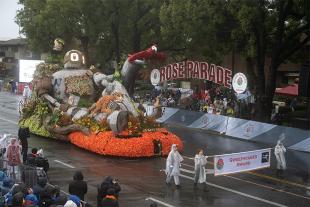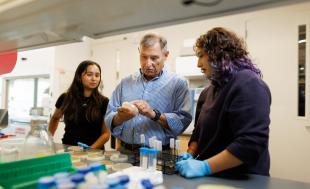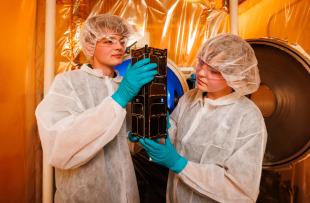One Swell Project: Students Develop Instruments to Measure Waves, Tides
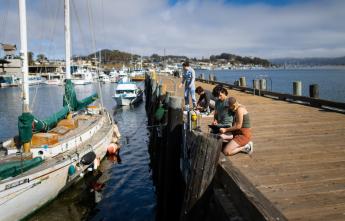
On a clear and windy afternoon in July, a group of Cal Poly students congregated at the Coast Guard Pier in Morro Bay with laptops and equipment, bending down to look over the side of the pier to check and deploy a series of sensors on the wooden pilings.
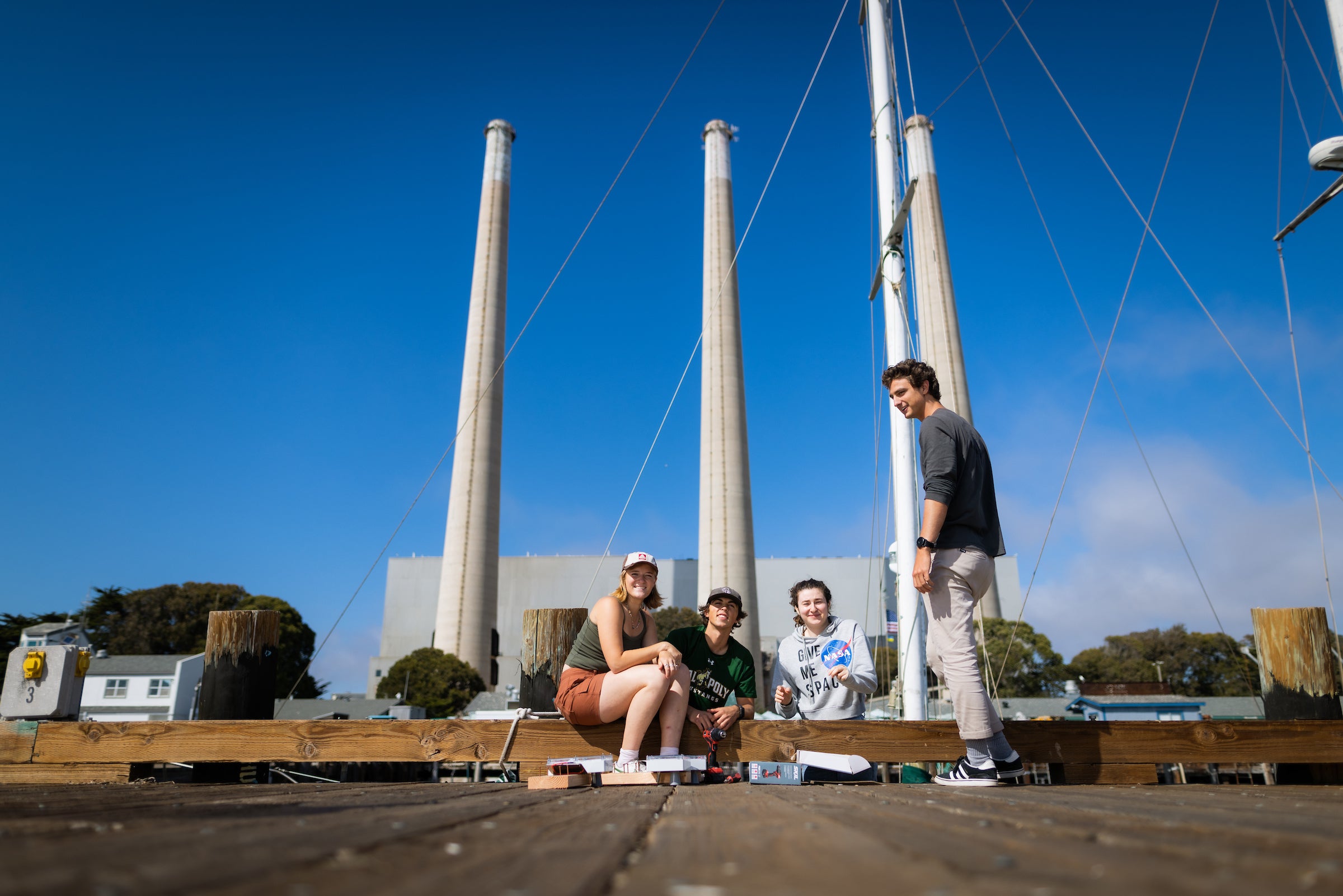
The students, working with civil engineering Professor Stefan Talke, have spent their summer constructing and fine-tuning low-cost instruments that measure waves and tides simultaneously, testing them at spots around the Central Coast including the Coast Guard Pier and the Cal Poly Pier.
Tide sensors that the National Oceanic and Atmospheric Administration (NOAA) use to monitor tides can cost tens of thousands of dollars and are only situated every 50 to 100 miles along the California coast. Developing low-cost alternatives could help scientists and communities determine sea level rise, tsunami impacts, extreme weather events and even the best times to go surfing. Another benefit of developing instrumentation for both waves and tides: right now, most sensors only work for one of those things, so gathering more comprehensive data is a challenge.
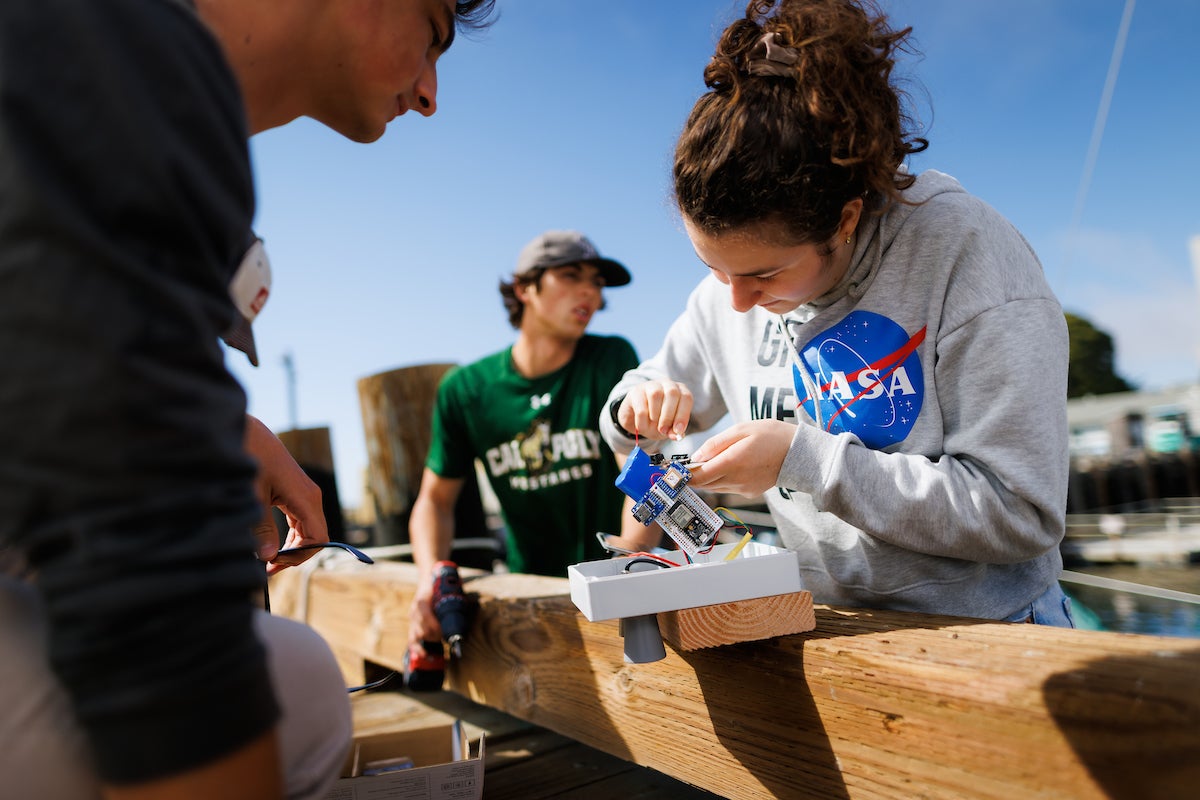
Talke likens the development of inexpensive instrumentation to the rise of Waze and other traffic apps. Twenty years ago, traffic monitoring was expensive and had to be performed by helicopter or government instruments, but now people can send in their data to the app where it’s freely available to just about anyone.
“There's an old saying that the best time to plant an orchard is 20 years ago and the next best time is now,” Talke said. “If we get these sensors set up, and we keep this sensor network going for years and years, it’ll be a really valuable dataset when we’re seeing the effects of sea level rise and climate change. The data will help us when we’re trying to figure out what to do about it.”
Similar efforts are underway in places like Georgia and North Carolina, where scientists are using more expensive commercial gauges that cost a few thousand dollars.
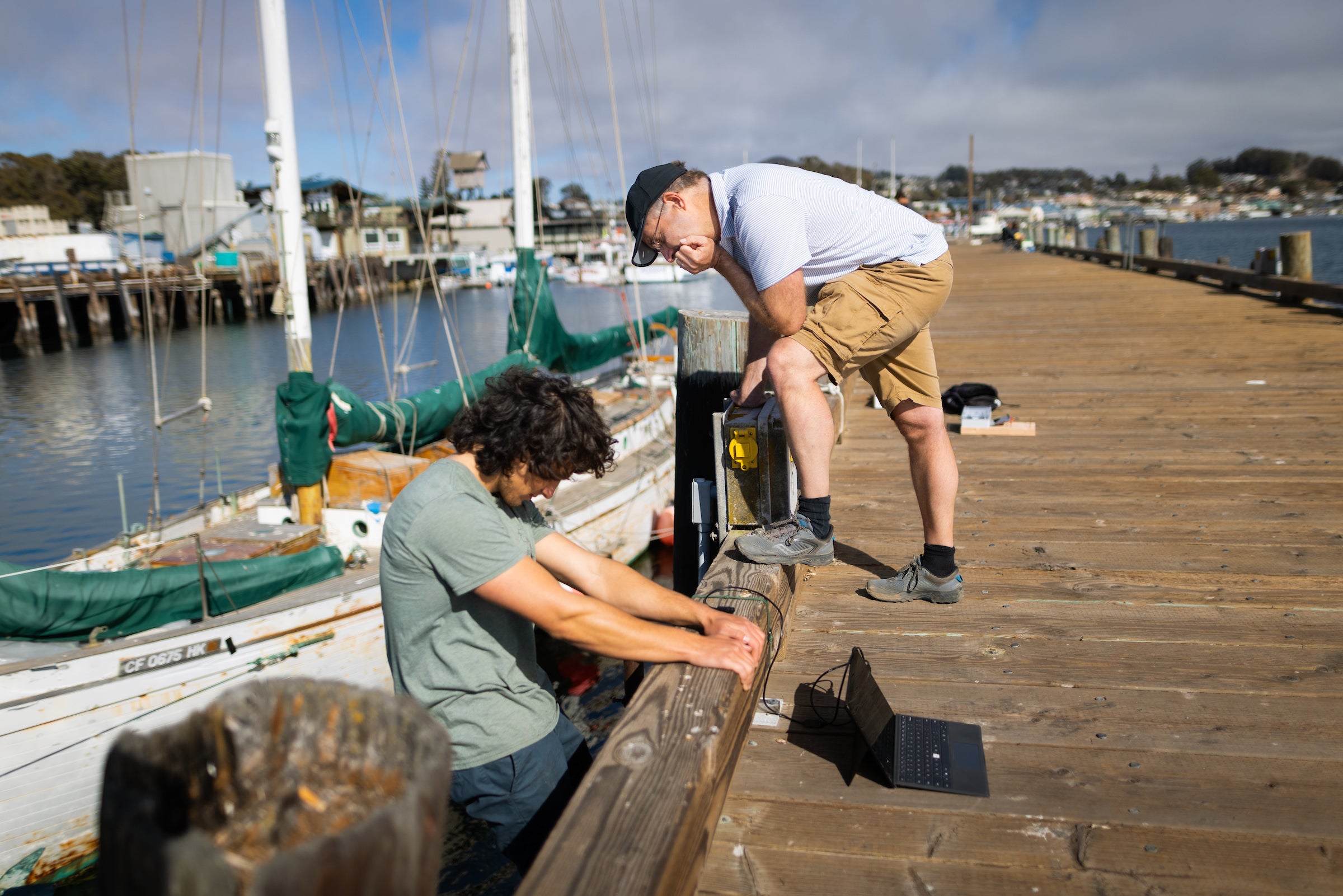
“Climate change effects are really hitting there already, with coastal flooding happening all the time,” Talke said, adding that while California is not quite at that point, the transition to chronic flooding can happen fairly quickly once it starts — within one to two decades. “Monitoring water levels is good for that sort of planning. If there’s a report of flooding somewhere on the Central Coast, we’ll be able to compare it to actual measured water levels.”
Talke’s area of expertise is civil and coastal engineering, but the students he’s worked with over the summer have electrical engineering, mechanical engineering and computer engineering backgrounds.
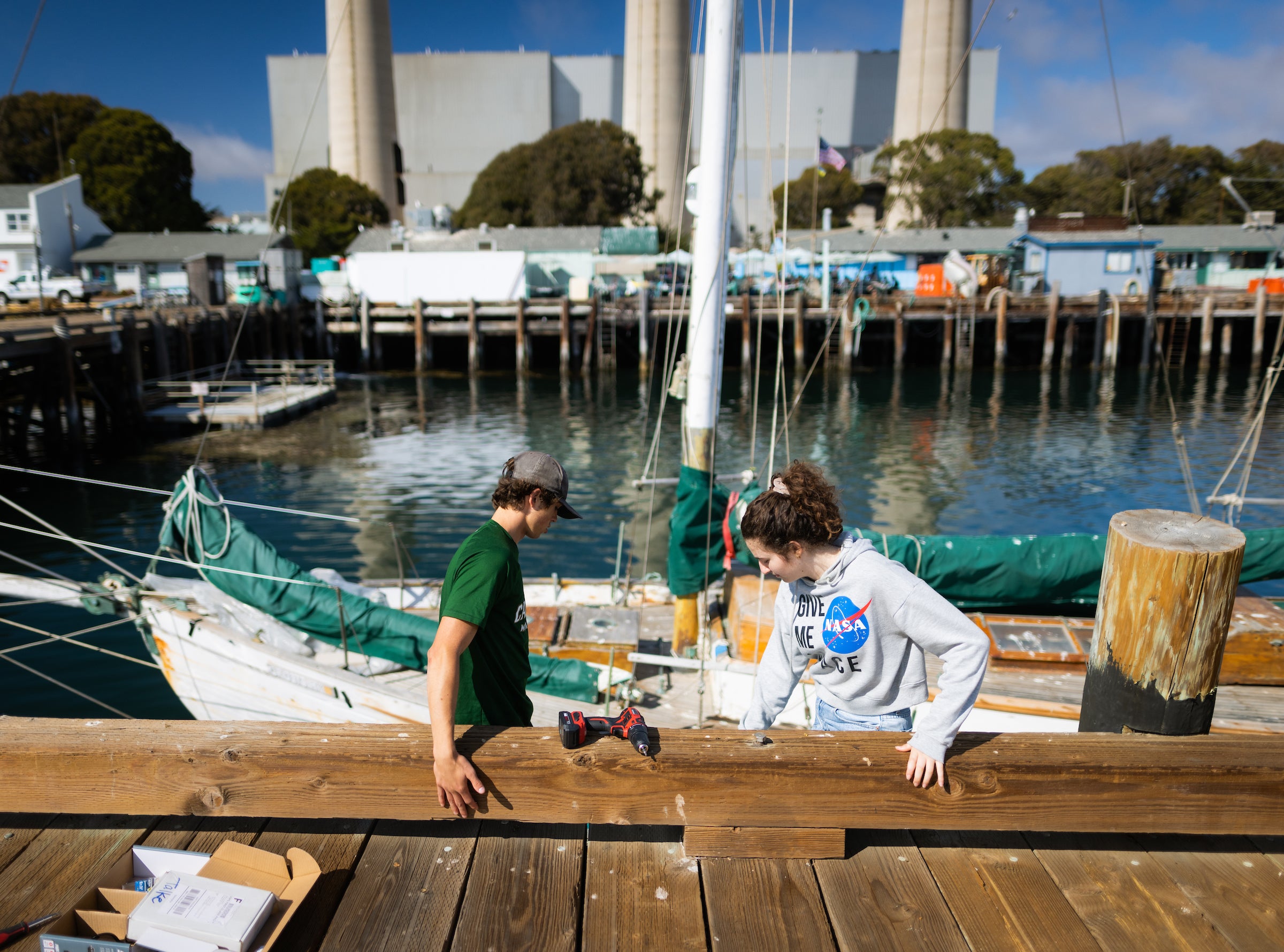
“They’re able to do things I wouldn’t be able to, or that would take me a really long time,” Talke said, noting that the students’ skill sets mean they know how to solder electrical parts, order and use the correct equipment, properly check for errors on the sensors and place wiring into motherboards. “They've improved capabilities; we’re still working out some problems and kinks, but these are solvable problems. It just requires some sweat equity.”
Abby Neal, a third-year electrical engineering student working on this research project, says she’s working on a way to connect to the sensors on the board via WiFi and cellular connection, which would allow people to see the data remotely and in real time.
“It’s a way to make seeing the data really easy and usable,” she said. “There are so many interesting ways to involve electrical engineering in this project.”
Before she began working on the project, Neal said that applying her major to another thing she loves — the ocean — hadn’t crossed her mind, but she’s hoping to stay on the project after summer ends.
“Getting the WiFi set up is something I’ve never done before on my own. I love researching something and making it work,” Neal said. “The coolest thing is applying what I’ve learned in my classes. It’s very satisfying.”
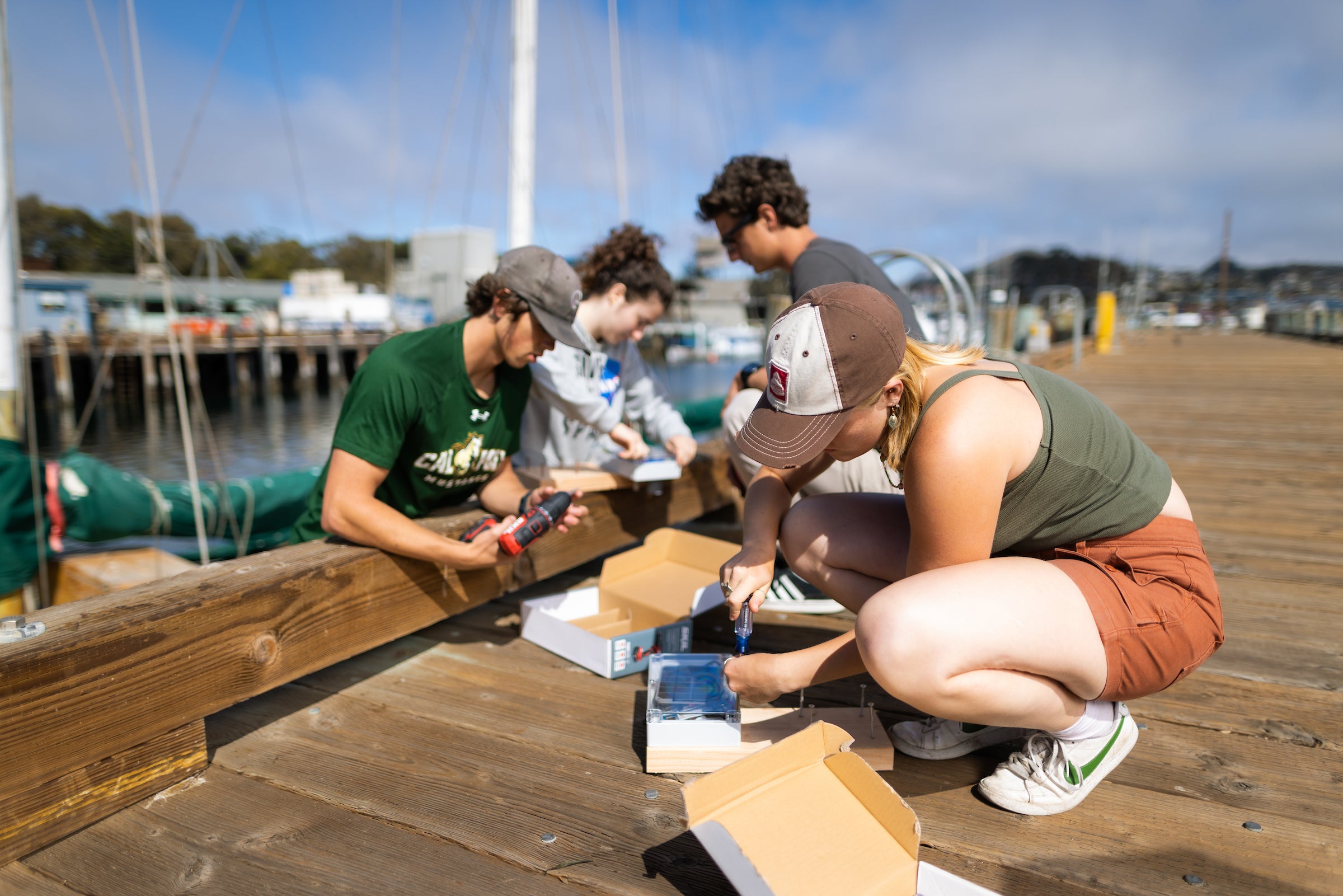
Luke Wierl, a third-year general engineering major, said he was a little apprehensive when he started working on the project in spring quarter.
“Coming in, I didn’t have any research experience,” Wierl said. “I was pretty nervous and didn’t know what was going to happen, I was just happy to get the opportunity.”
Wierl entered the project already leaning toward switching his major to mechanical engineering, but working on the sensors reinforced his belief that the change was right for him. He also learned a great deal about other types of engineering from fellow students on the project.
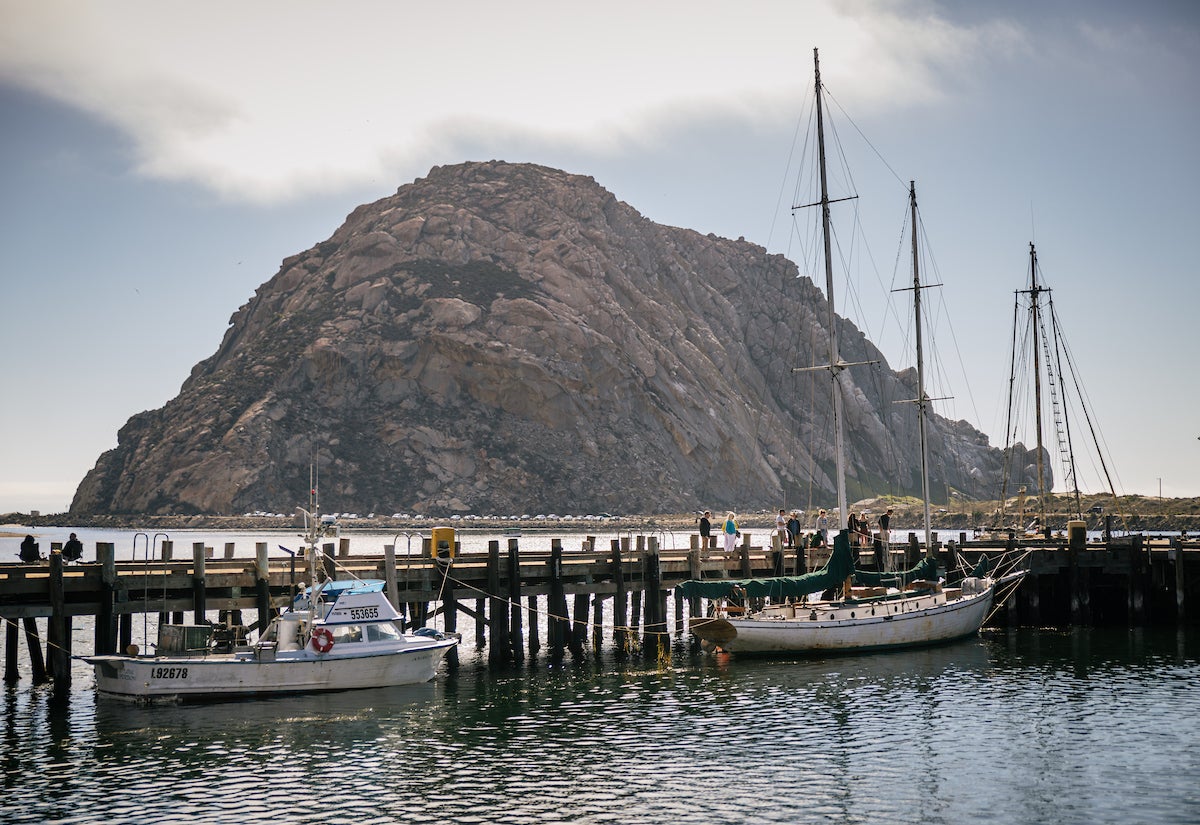
“This project has shown me a whole new world in engineering,” Wierl said. “Especially being with other types of engineers, you get to see how they apply themselves. I just find myself very enthused to come up with new solutions to the problems that are presented to me.”
Talke and the students have presented the project to stakeholders around the county and eventually hope to install the sensors on piers along the Central Coast.
“In the long term, the hope is to make this part of the coastal monitoring system,” Talke said. “The coast is a really unique environment and these kinds of measurements, especially waves and tides, can contribute to our knowledge of these environments and help us interpret what is happening.”
Want more Learn by Doing stories in your life? Sign up for our monthly newsletter, the Cal Poly News Recap!

